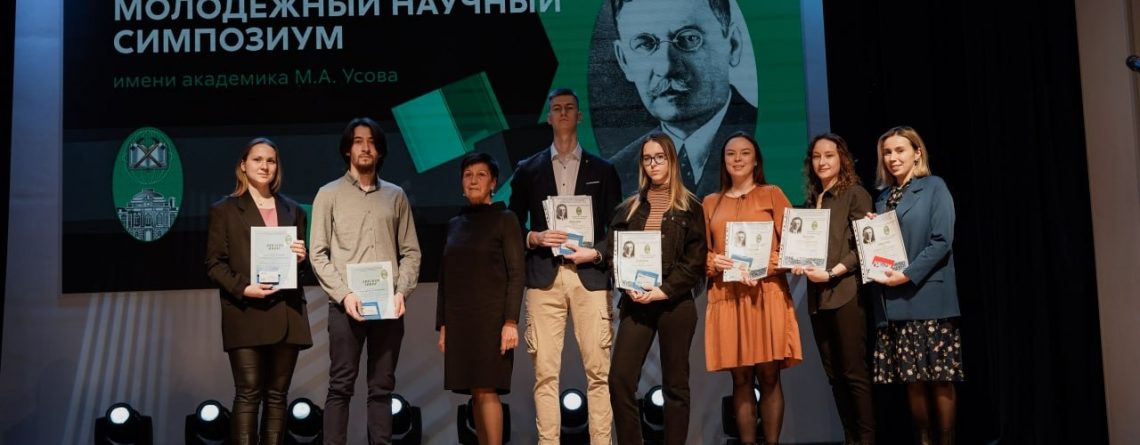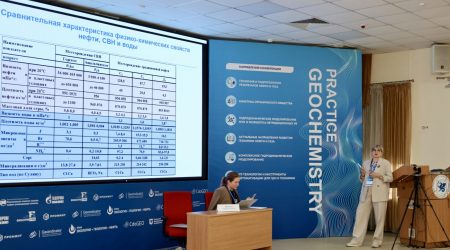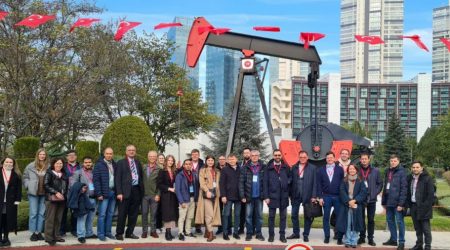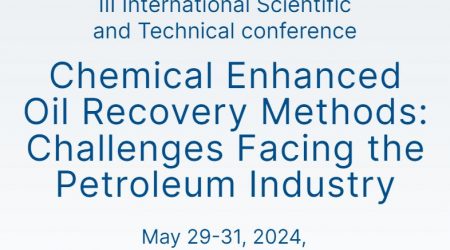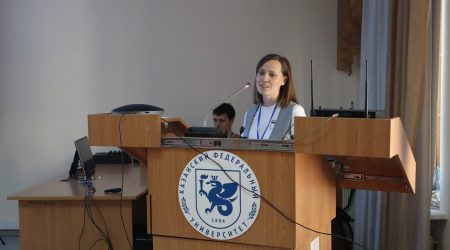Institute’s research showcased at Youth Scientific Symposium on the Problems of Geology and Subsoil Development in Tomsk
The event took place on 1 – 5 April.
Among KFU participants were:
Yevgeniya Morozova, Engineer, Center for Geothermochronology;
Dilyara Favarisova, Engineer, Center for Geothermochronology;
Regina Sarazieva, Engineer, Center for Geothermochronology;
Dilyara Kuzina, Senior Research Associate, Laboratory of Paleoecology, Paleoclimatology and Paleomagnetism;
Anastasiya Yusupova, Junior Research Associate, Laboratory of Studies of Oil and Gas Bearing Basins;
Bulat Gazizulin, Laboratory Researcher, Laboratory of Paleoclimatology, Paleoecology and Paleomagnetism;
Aleksey Khayuzkin, Junior Research Associate, Laboratory of Studies of the State and Evolution of Underground Reservoirs.
Yevgeniya Morozova’s report History of geochemical studies of oil of Romashkino oil field in co-authorship with a team of young scientists was awarded the 1st degree diploma in the Paleogeography and evolution of sedimentary basins session.
“The major part of the report is devoted to already previously done research by such leading scientists-geochemists as G.N. Gordadze, G.P. Kayukova, E.M. Galimov, and others. The paper focuses on the hypotheses that were put forward by scientists on the basis of previously conducted research. Their own material devoted to biomarker analysis of oil of the Republic of Tatarstan was presented. The data allowed us to differentiate the oils of the Republic and draw our own conclusions about their genesis”, commented Evgeniya.
Dilyara Kuzina prepared a plenary report on limnology research at IGPT.
“The topic of climate change is certainly very demanded and interesting,” she notes. “To trace the changes, we need to study what the climate was like several tens, hundreds, thousands of years ago. The study of lake sediments helps us in this. Special emphasis was placed on the selection of core sampling sites, on the technology of selecting undisturbed core and its subsequent study using magnetic and paleomagnetic methods. Attention was drawn to these very points, due to the fact that we have unique instruments and installations for obtaining high-quality material, as well as extensive experience in the field of magnetism and paleomagnetism of rocks”.
Lake research was also the topic of Anastasiya Yusupova’s report.
Alexey Khayuzkin presented his report Influence of oil viscosity on the amount of adsorbed surfactant in porous media at different heterogeneity of pore space.
“The action of surfactant helps to increase oil production due to mobilization of residual oil held by capillary forces,” notes Aleksey. “Despite the fact that surfactant flooding is an old method of enhanced oil recovery, it remains one of the most effective and does not lose its relevance, which is confirmed by the development of new surfactants with improved properties. When interacting with rock, surfactant molecules can adsorb on its surface. Understanding the relationship between the adsorbed amount of surfactant molecules and the equilibrium concentration of the surfactant is critical to predicting losses of expensive reagents.’
Bulat Gazizulin made a presentation on Biostratigraphy of the lower part of the Bolshiye Tarkhany section (Republic of Tatarstan). According to the young scientist, the section is unique in that it contains a biodiversity of different groups of fossils: from cephalopods and bivalves to foraminifera and ostracods. This, in turn, makes it possible to reconstruct the settings of Earth’s past.
“Mesozoic sediments on the territory of the Republic have been studied for a long time (since the middle of the last century), but today they require reexamination, especially with the involvement of micropaleontological material (foraminifera, ostracods). They provide a more accurate stratigraphic reference of sediments, allowing not only to dissect the section, but also to correlate them with the same-age sediments of adjacent regions of the East European Platform”, noted the scientist.

